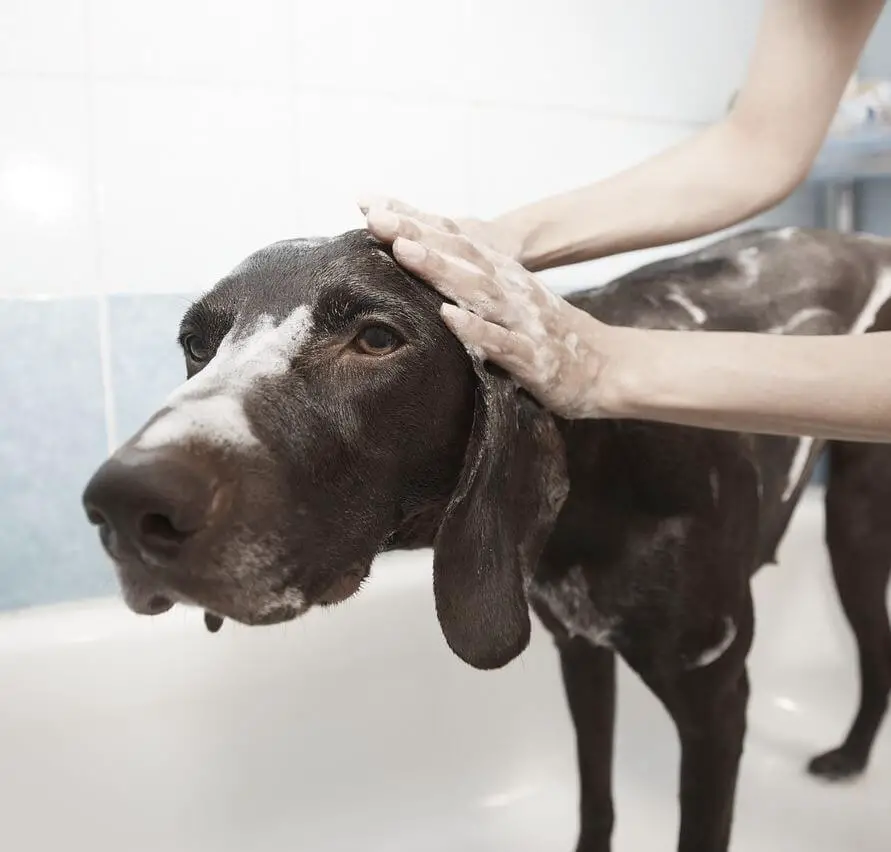The frequency of baths for your furry friend is a topic that often sparks debate among dog owners. While some believe in bathing their dogs frequently to keep them clean and fresh, others prefer a more relaxed approach. The truth is, the answer isn’t one-size-fits-all. Several factors come into play when determining how often your dog needs a bath. Here’s a breakdown of what you need to consider:

Factors Affecting Bath Frequency:
- Breed: One of the primary factors influencing how often you should bathe your dog is their breed. Dogs with oily coats, such as Retrievers, may benefit from more frequent baths, typically every 4-6 weeks. This helps manage oil buildup and prevents skin problems. On the other hand, breeds with dry coats like Greyhounds may require less frequent bathing, usually every 2-3 months, due to minimal oil production.
- Coat Type: The length and texture of your dog’s coat also play a significant role in determining bath frequency. Long-haired dogs are more prone to matting and tangles, so they may need baths every 4-8 weeks to maintain a healthy coat. Short-haired dogs, however, generally require less frequent bathing.
- Activity Level: If your dog is a fan of outdoor adventures and enjoys rolling in dirt, swimming in muddy water, or exploring allergen-rich environments, they may need more frequent baths (every 4-6 weeks) to remove dirt and debris that can irritate their skin.
- Environmental Conditions: The environment in which your dog lives can also influence how often they need a bath. Dogs living in dusty or humid areas may require more frequent bathing (every 4-6 weeks) to keep their coat clean and prevent discomfort.
- Skin and Coat Health: Dogs with sensitive skin or allergies may need special consideration when it comes to bathing frequency. Using gentle shampoos and bathing less frequently (every 2-3 months) can help prevent skin irritation and maintain a healthy coat.
Consulting Your Veterinarian:
It’s essential to consult your veterinarian to determine the most suitable bathing frequency for your dog. They can provide personalized advice based on your dog’s individual needs, health conditions, and lifestyle factors. Your vet can also recommend the right type of shampoo for your dog’s coat and skin type, avoiding harsh chemicals that could strip natural oils and cause irritation.
Alternatives to Frequent Baths:
If you’re concerned about bathing your dog too often, there are alternative ways to keep them clean:
- Regular Brushing: Brushing your dog’s coat regularly helps remove loose hair, dirt, and debris, promoting a healthy coat and skin.
- Spot Cleaning: For minor messes, you can use a damp cloth and a dog-friendly cleaning solution to spot clean specific areas without the need for a full bath.
Signs Your Dog Might Need a Bath:
- Noticeable unpleasant odor
- Visible dirt or debris on their fur
- Greasy or oily fur
- Excessive scratching or itching
- Matting or tangles, especially for long-haired breeds
The absence of odor alone doesn’t necessarily mean your dog needs a bath. It’s essential to consider other factors affecting their skin and coat health. Regular consultations with your veterinarian and establishing a bathing routine tailored to your dog’s individual needs are crucial for their well-being and comfort. By taking these factors into account, you can ensure your canine companion enjoys a healthy and happy life.
